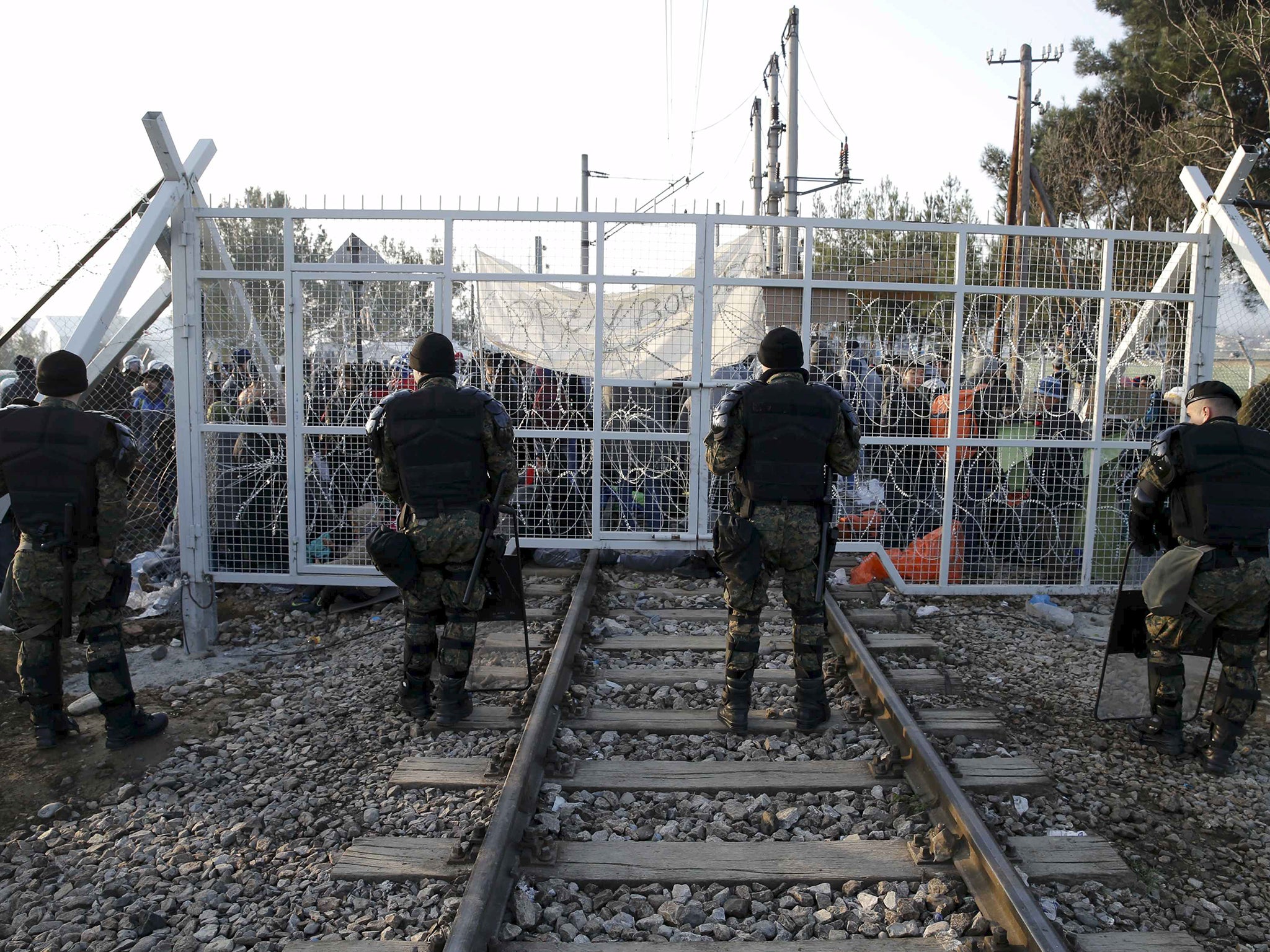Refugee crisis: Concern over 'unprecedented' arrivals in Greece and Italy after 2016 total passes 100,000
The same milestone was not passed until June in 2015, which was a record-breaking year for refugee arrivals in Europe

Your support helps us to tell the story
This election is still a dead heat, according to most polls. In a fight with such wafer-thin margins, we need reporters on the ground talking to the people Trump and Harris are courting. Your support allows us to keep sending journalists to the story.
The Independent is trusted by 27 million Americans from across the entire political spectrum every month. Unlike many other quality news outlets, we choose not to lock you out of our reporting and analysis with paywalls. But quality journalism must still be paid for.
Help us keep bring these critical stories to light. Your support makes all the difference.
More than 100,000 refugees and migrants have arrived in Europe so far this year – more than eight times the rate seen during the same period in 2015.
Humanitarian organisations have already raised concern about the “huge” numbers and their implications as border controls continue to tighten on the long route to western Europe and the political will to welcome asylum seekers wanes.
Governments and aid agencies hoped that winter weather would slow the tide of flimsy smugglers’ boats being sent from Turkey to Greek islands but Greece alone has received more than 97,000 arrivals since the start of 2016, according to International Organisation for Migration (IOM) figures.
More than 410 migrants and refugees have died during the same period, mostly in the stretch of the Aegean where Alan Kurdi drowned last year.
Syrian refugees make up almost half of those arriving in Greece, while a quarter are from Afghanistan, 17 per cent from Iraq and others from Iran, Pakistan, Morocco, Bangladesh, Somalia and other countries of origin.
Meanwhile, smugglers are continuing to abandon large boats off the coast of north Africa, which was the dominant route used in the early part of last year.
Following several days with no arrivals mainly due to rough seas, a total of 940 migrants were rescued on Monday off the coast of Sicily, most of whom had fled violence in Sub-Saharan Africa and Libya.
Flavio Di Giacomo, the IOM’s spokesperson for Italy, said: “We are still registering the arrival of many vulnerable migrants, who are often in very bad condition, having been subjected to violence by smugglers in Libya.
“We are also still seeing many women victims of trafficking – an alarming trend already registered in 2015.”
A spokesperson for the IOM told the Independent it was difficult to predict how numbers would develop through the year but said the increase on January and February was “concerning”.
Last year, the number of arrivals grew through the spring and summer to peak in October, before slowly dropping off as winter set in and ending the year at a total of 1.015 million.
Save the Children, which is helping the youngest and most vulnerable refugees arriving in Europe, cautioned that the “unprecedented nature of the crisis” was making it difficult to plan a response.

Caroline Anning, a spokesperson for the charity, said: “Based on previous trends, we had thought the numbers of people arriving would drop to a small amount in winter, as cold temperatures and dangerous seas make the journey even more difficult.
“The numbers have gone down, but thousands of people are still arriving every day.
“Their determination in the face of winter storms and increasingly strict European border controls demonstrates how desperate families are to flee the brutal conflicts in Syria, Afghanistan and Iraq, where most refugees are arriving from.”
In addition to the freezing winter temperatures on the well-trodden Balkan route, border controls and immigration crackdowns are stranding hundreds of thousands of refugees along the way to destination countries.
New restrictions in Macedonia are preventing Afghans being allowed through, despite the fact they make up around a quarter of arrivals and that around half are women and children.

More than 5,000 people are now trapped at the border, Save the Children estimate, with resources to provide water, food and shelter quickly running out.
Meanwhile, French authorities are planning to evict asylum seekers from part of the “jungle” camp in Calais, and Austria and Slovenia’s decisions to cap arrivals were having a knock-on effect along the route.
Greece and Italy have long complained at being left to shoulder the bulk of the strain the refugee crisis is putting on Europe and fear restrictions will worsen the situation at arrival points.
The United Nations refugee agency (UNHCR) said there was also concern about continued deaths at sea, with 340 children having died since the world was shocked by photos of Alan Kurdi’s body in August.
“There is still no solution for families like the Kurdis whose lives are in danger ,” a spokesperson told the Independent.
“What is needed is safe and legal channels to seek safety in the EU so people aren’t forced to take these journeys and put their lives and their children’s lives at risk.”
Subscribe to Independent Premium to bookmark this article
Want to bookmark your favourite articles and stories to read or reference later? Start your Independent Premium subscription today.
Join our commenting forum
Join thought-provoking conversations, follow other Independent readers and see their replies
Comments